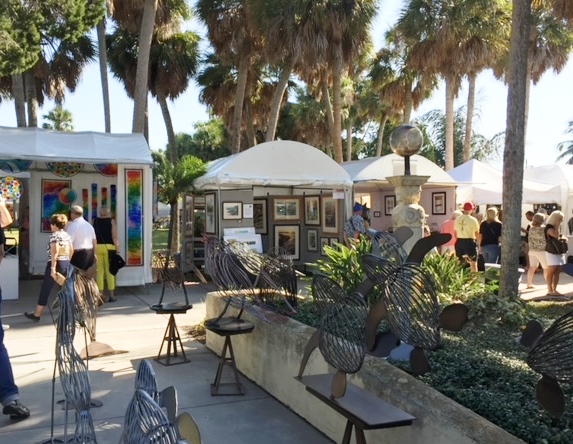By Carolyn Edlund
Quite often, fairs and festivals are the initial point of contact with potential collectors.

When you exhibit at an art fair or festival, you meet a lot of shoppers. If there is a truly interested prospect, you know it. They say the right things, and their body language indicates that they are seriously considering a purchase. You have engaged in meaningful conversation with them, but more needs to be done before the sale can be closed.
They may love what you make, but nothing you have in inventory is perfect. You might suggest a custom order, if you offer this as a service. And if you do, be prepared ahead of time for conversations about commission work. Know the answers to questions such as terms, deposit, turnaround time, etc. Be prepared to discuss the process clearly with the customer.
If you don’t take commissions, you still have a fan, and a potential future customer (also known as a warm lead) that you will want to stay in touch with. Here’s how to keep the conversation going and close future sales from the leads you develop:
Get contact information
Obtaining a name and email address are essential for further contact. If the customer isn’t quite ready to buy, use your cell phone to take a photograph of the piece they are considering. Tell them you can simply email that photo to them with your contact information, price, and other info about the piece, or a link to the product page for that item on your website. This gives you their email address, and will serve as a reminder to them of the piece they loved after the show is over.
During any sales conversation in your booth, ask shoppers if you can stay in touch through occasional emails that share new work. Their agreement places their email address on your email marketing list. Your subsequent emails might be general in nature, or could be very specifically tailored to that particular prospect. The more information you have about their interests, their schedule, their budget, etc. the more effectively you will be able to lead them through the sales cycle.
Follow up
This is critical to making most art sales. Your follow up may be a phone call, a written note, an email or a meeting, depending on their needs and your availability. Will you travel to their home to take measurements for a painting or sculpture? Will you bring a piece under consideration with you to see how it looks in their space? Do they need a spouse or other person in order to make a major buying decision? Would it be more appropriate for you to invite them to your studio to see how you work and view your entire inventory?
Every time you follow up there is an opportunity for the prospective collector to know you better and remember you favorably. It can take many contacts, and even sometimes years, before a sale is made. Make a practice of following up with all types of prospects and maintaining an email marketing routine. That will help you build your network and your fan base, and stay in front of people over the long term.
Ask for the sale
Once the questions have been answered and any objections overcome, and you have given your customer enough space to consider and make their decision, it is appropriate to ask, “May I wrap this up for you?” or “Are you ready to become the owner of this very special sculpture?”
You are selling, and they are considering making a purchase. It’s not rude or presumptuous to politely ask if they are at the point of buying. Your question may be the catalyst that seals the deal, whereas if you never ask for the sale, you may be leaving an opportunity on the table. When a significant purchase is in question, your ability to be a consultative seller can make all the difference.
Don’t give up
Have you ever made a sale to a someone who mentions that they have been following your work for years? That’s not unusual. Persistence is essential to cultivating long-term prospects who love what you do but are not at the time of need right now. Even if they never buy from you, they can be helpful by telling others about your art, sharing your social media posts, and supporting your artistic practice.

Speak Your Mind